As you prepare your garden for the colder months, consider the wildlife needs in your area.
By selecting plants that provide food and shelter during the winter, you can create a haven for birds, small mammals, and other creatures that liven up your outdoor space while helping to maintain balance in your local ecosystem.
Planting a diverse selection ensures a continuous bloom throughout the growing season, offering sustenance even when other food sources are scarce or buried under the snow.
The Importance of Plants for Wildlife During Winter
Winter can be a challenging time for wildlife, as natural food sources become scarce and shelter is harder to find.
By incorporating plants that provide food and shelter for wildlife in your yard during the colder months, you can create a haven for these creatures and enjoy the beauty they bring to your outdoor space.
Native plants are an excellent choice for this purpose, as they have co-evolved with the local wildlife and are well-suited to meeting their needs.
Planting evergreens is a great way to offer both food and shelter, as their leaves or needles persist throughout the year.
This creates valuable cover for birds and small mammals while also providing a food source in the form of seeds or berries.
Creating a diverse habitat in your yard is important not just for the well-being of the wildlife but for the ecosystem as a whole.
By including various plants that offer food and shelter, you help maintain a healthy balance and promote biodiversity in your local area.
Types of Plants That Provide Shelter
During the cold winter months, the wildlife in your garden needs a safe and warm shelter to survive.
In this section, we'll discuss three different types of plants that provide excellent shelter for your local wildlife: evergreens, bushes and shrubs, and grasses and reeds.
Evergreens
Evergreens are a fantastic choice for providing shelter to wildlife because they maintain their foliage throughout the year, even in cold winter months.
Their dense branches create a cozy and secure environment for animals seeking refuge from the cold and wind.
Not only do these trees offer shelter, but they also provide a food source as their seeds are enjoyed by various bird species.
1. Spruces
Spruces are known for their elegant appearance. For instance, the Blue Arrow Spruce (Picea pungens 'Blue Arrow') is celebrated for its narrow, columnar shape and striking blue-green foliage.
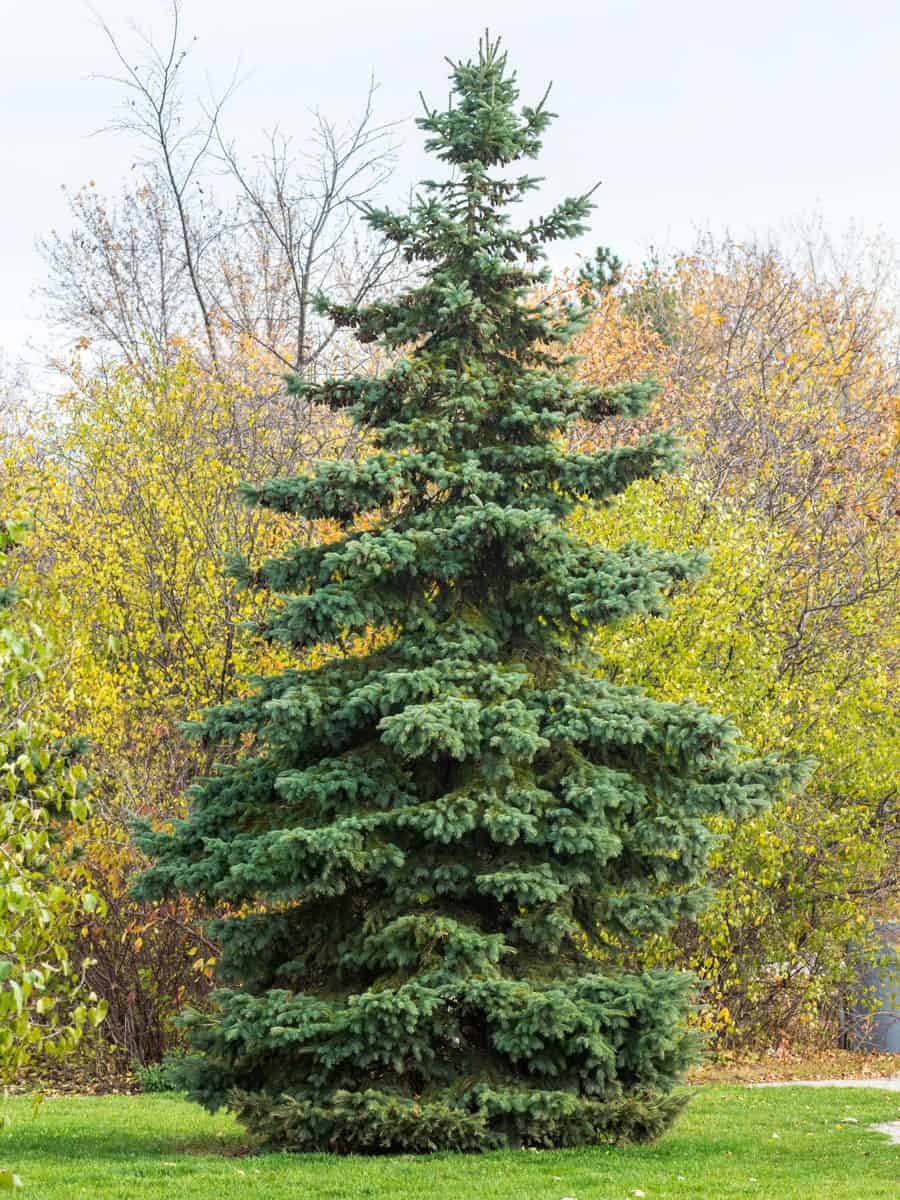
These features add a touch of elegance to any landscape, catching the eye of passersby.
Spruces provide shelter to a variety of wildlife including birds, small mammals, and insects.
Their dense branching and foliage create a secure environment for these animals.
The seeds produced by Spruces are a food source for birds like nuthatches, chickadees, crossbills, and nutcrackers, as well as red squirrels who hoard them in caches in the soil.
2. Firs
Firs are generally conical, upright growing evergreens with a blue cast, resembling Colorado blue spruce.
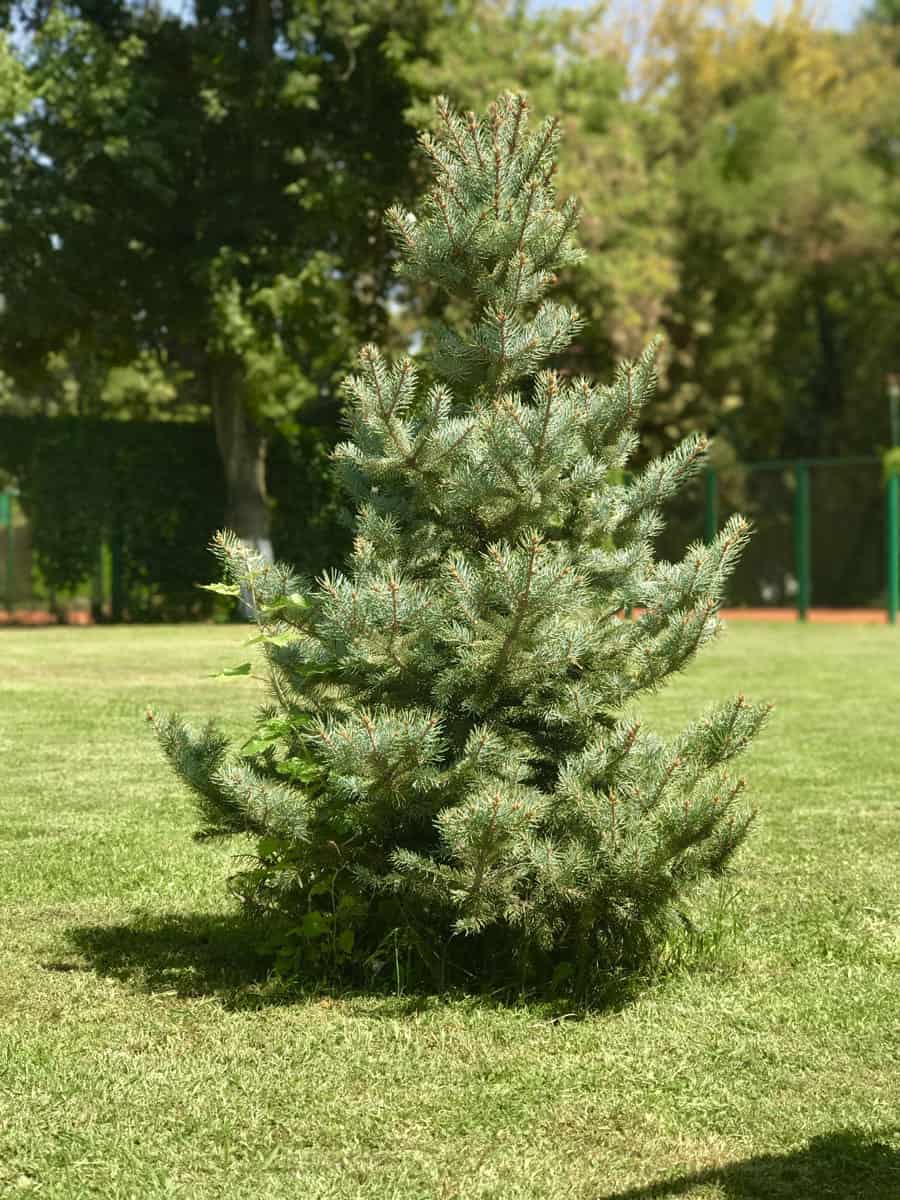
As they mature, they become rounded and often form multiple trunks, with soft, flat needles that are silvery-blue to silvery-green and curve upward, making them an attractive addition to landscapes.
The seeds of Douglas fir, a type of fir tree, are an important food source for a variety of birds and mammals including chickadees, red crossbill, finches, Douglas squirrel, Townsend chipmunk, deer, meadow mice, and shrews among others.
3. Pines
Pine trees are valued by gardeners for their beauty, versatility, and practicality.
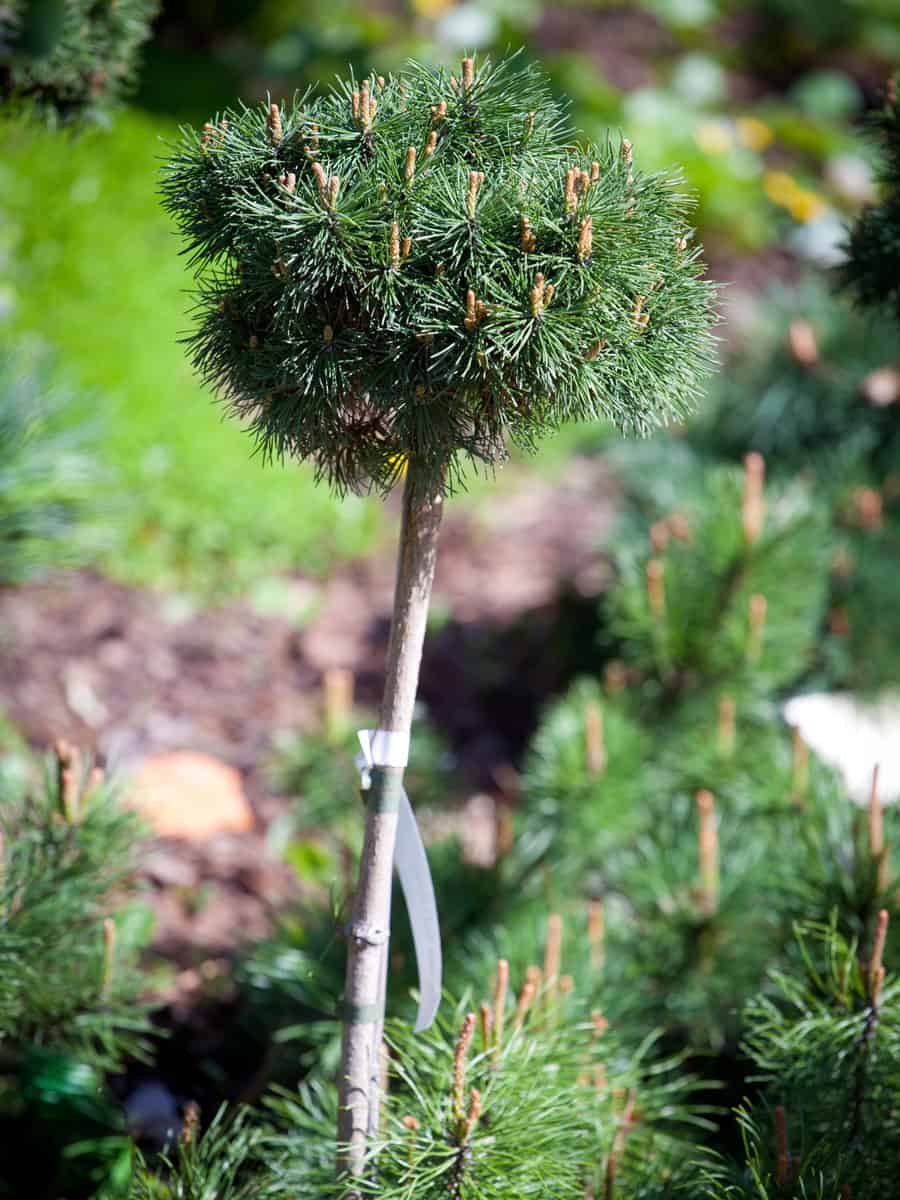
They offer an attractive backdrop for gardens and can also be used to provide shelter, a source of privacy, and even food, making them a versatile choice for landscaping.
Pine trees are known to provide shelter to many types of local wildlife, with their dense foliage and many branches creating perfect hiding spots for birds.
They bear woody cones containing nutrient-rich seeds which are valued by many wildlife species as food.
Animals such as squirrels, chipmunks, and various bird species are attracted to the seeds of pine trees, making them a vital part of the ecosystem.
Bushes and Shrubs
Bushes and shrubs are another excellent way to supply wildlife with shelter.
Many deciduous bushes drop their leaves during the winter, but there are several evergreen options for your garden, like boxwood bushes or holly.
These provide fantastic cover for small animals and birds, and if you choose one with berries, it can also be a food source during the winter months.
4. Boxwood
Boxwood shrubs are renowned for their dense, evergreen foliage which remains vibrant throughout the year, providing an emerald-green color even in winter.
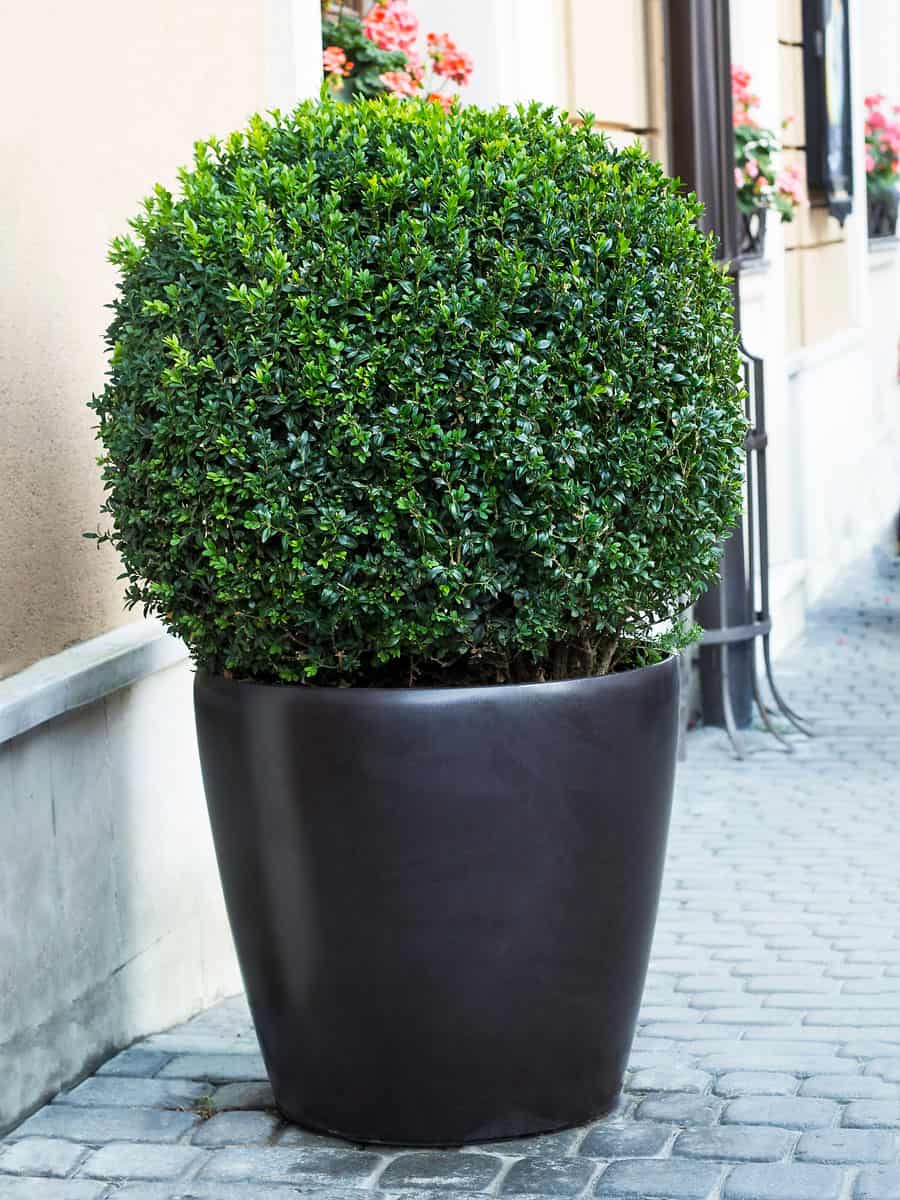
They are highly versatile in landscaping, playing various roles such as hedges, topiaries, or specimen shrubs.
Their shiny foliage and the variety offered by its 365 cultivars make them a popular choice for formal gardens, and they are known to add a formal touch to landscapes.
Common or American boxwood can grow to a height of 15 to 20 feet at maturity, while the Littleleaf or Japanese boxwood is a low-growing variety.
The former has oblong to oval-shaped leaves which are dark green above and yellow-green beneath, whereas the latter is characterized by a more compact structure.
The flowers of the Littleleaf boxwood are attractive to bees, providing a nectar source for these pollinators.
5. Holly
Holly is globally cultivated due to its aesthetic appeal, thriving in temperate climates and often found embellishing woodlands and gardens.

Its glossy, spiky leaves and bright red berries are not only visually pleasing but are also traditionally used in Christmas decorations
It's a popular choice for ornamental landscaping, adding greenery and color to gardens.
The low maintenance nature of Holly, along with its resistance to many pests and diseases, adds to its aesthetic value in yards and gardens.
Gardening with Holly can provide privacy and protection from the elements besides its aesthetic appeal.
It can be grown as a specimen tree, clipped bush, or hedge, and there are dozens of varieties, many with variegated leaves.
Holly provides a vital winter food source for birds due to its berries.
Birds are particularly attracted to the bright red berries, which are a food source during the colder months when other food may be scarce.
The dense foliage and branches of Holly shrubs provide shelter to birds and even small mammals. It's a well-loved shrub that shelters birds and gives hedgehogs a cozy place to hibernate.
The fruit of the Holly tree is also a food source for wildlife and could be a beneficial inclusion in butterfly, pollinator, native, or children’s gardens.
Grasses and Reeds
Tall grasses and reeds can be a great addition to your garden, as they provide shelter to a multitude of creatures.
Perennial grasses, like switchgrass and bluestem, grow during the warmer months and can be left standing during the winter to create habitats for small mammals and ground-feeding birds.
Reeds are also a fantastic choice if your garden has a water source.
These plants can provide cover to many aquatic species during these colder months.
6. Switchgrass
Switchgrass, a perennial, warm-season native species, has a pleasing aesthetic appeal with its tall structure, reaching 36 to 72 inches or 91 to 183 cm tall.
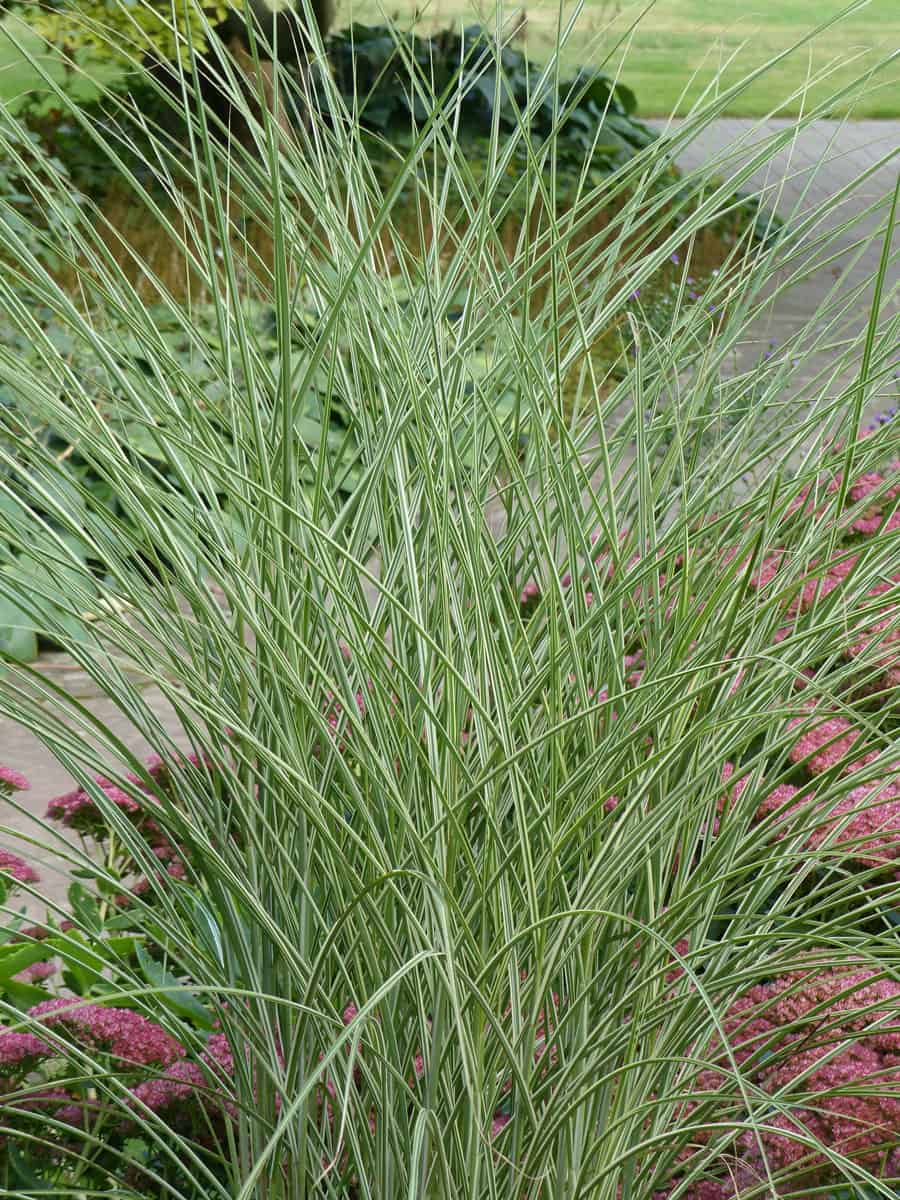
It adds a natural, graceful look to landscapes, especially during winter when its seed head resembles the branches of a weeping willow tree.
The seeds are teardrop-shaped and measure about 1/8 inch or 3.2 mm long.
Several cultivars of switchgrass are available, such as 'Heavy Metal' which is known for its dense, upright growth with metallic blue foliage, and ‘Dallas Blues’ which grows 5 feet tall and has 1-inch-wide blue stems, adding different textures and colors to the landscape.
Switchgrass provides habitat and cover for both large and small mammals, along with nesting places for wild turkey and quail.
The dense growth of switchgrass provides excellent cover, forage, and nesting areas for native species even when cultivated as a monoculture, making it a better choice than annual grain crops for wildlife habitat.
In addition, it provides seeds, browse, and shelter for various wildlife species, enhancing the wildlife habitat in the area it's planted.
Check out this 1 lb Switchgrass seeds on Amazon.
7. Bluestem
Bluestem grasses, including Big Bluestem and Little Bluestem, are known for their height and beautiful coloration throughout the seasons.
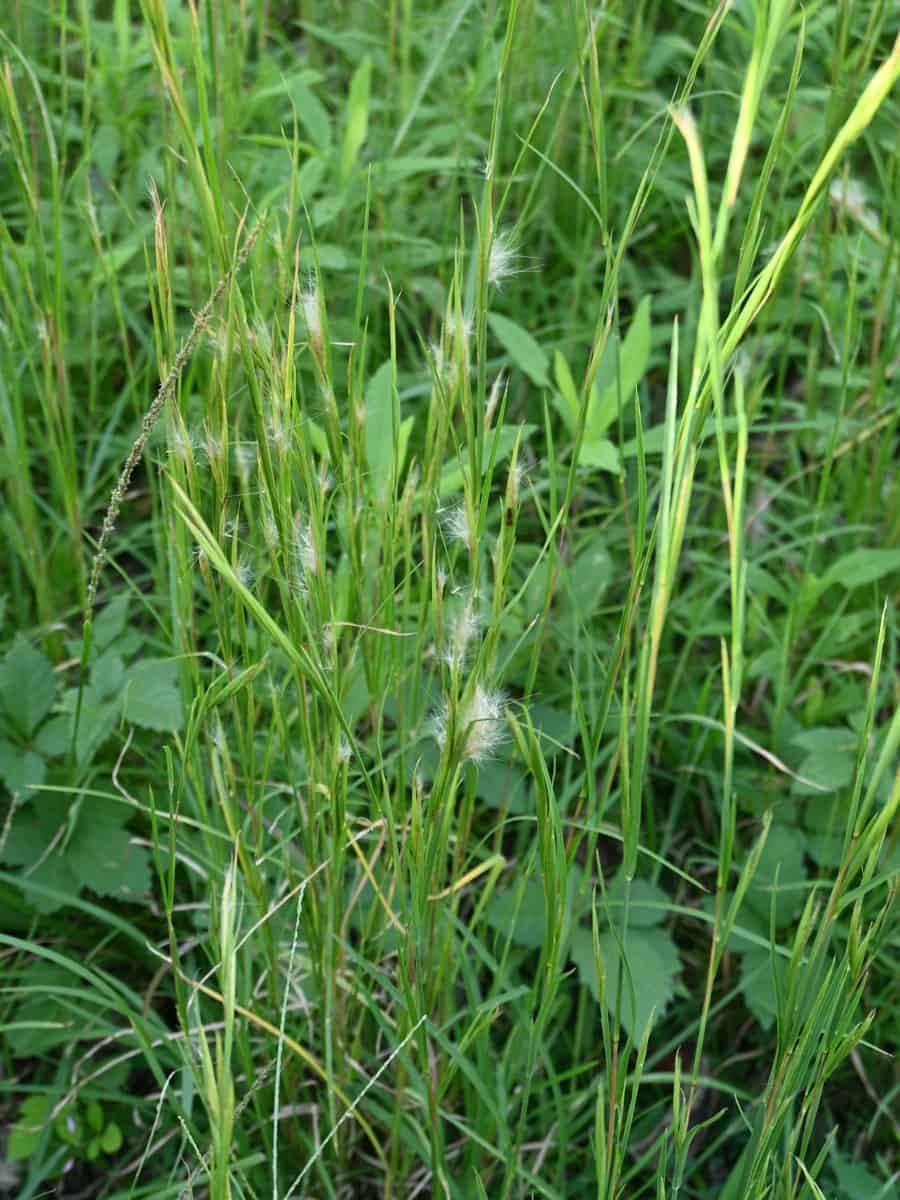
They are native to North America and grow well in various soil conditions, adding a natural and pleasing aesthetic to landscapes.
Big Bluestem changes color with the seasons: grayish or bluish-green in spring, green with red tinges in summer, and a stunning color display in fall when frosts turn it red.
Little Bluestem also changes color across seasons, with a blue-green color in spring and early summer, turning golden brown to mahogany in the fall, and displaying fluffy white seeds in late fall and winter.
Bluestem grasses provide excellent cover for a variety of wildlife species due to their “bunch grasses” nature, growing in clumps that create good cover for nests, compared to other types of grasses.
They are particularly beneficial for ground-nesting birds and small mammals, providing both shelter and food sources.
Get Big Bluestem native seeds on Amazon.
Types of Plants That Provide Food
During winter, there are several types of plants that can effectively provide sustenance for animals during this challenging time of year.
Here are some berry-bearing plants, nut-bearing trees, and seed-producing flowers that are particularly beneficial.
Berry-Bearing Plants
Berry-bearing plants are an excellent source of food for numerous wildlife species during winter.
These plants produce berries that serve as a valuable nutrient resource.
Some popular berry-bearing plants that you can incorporate into your garden are:
1. Beautyberry
A Florida native, beautyberry produces clusters of bright purple berries that attract various bird species.
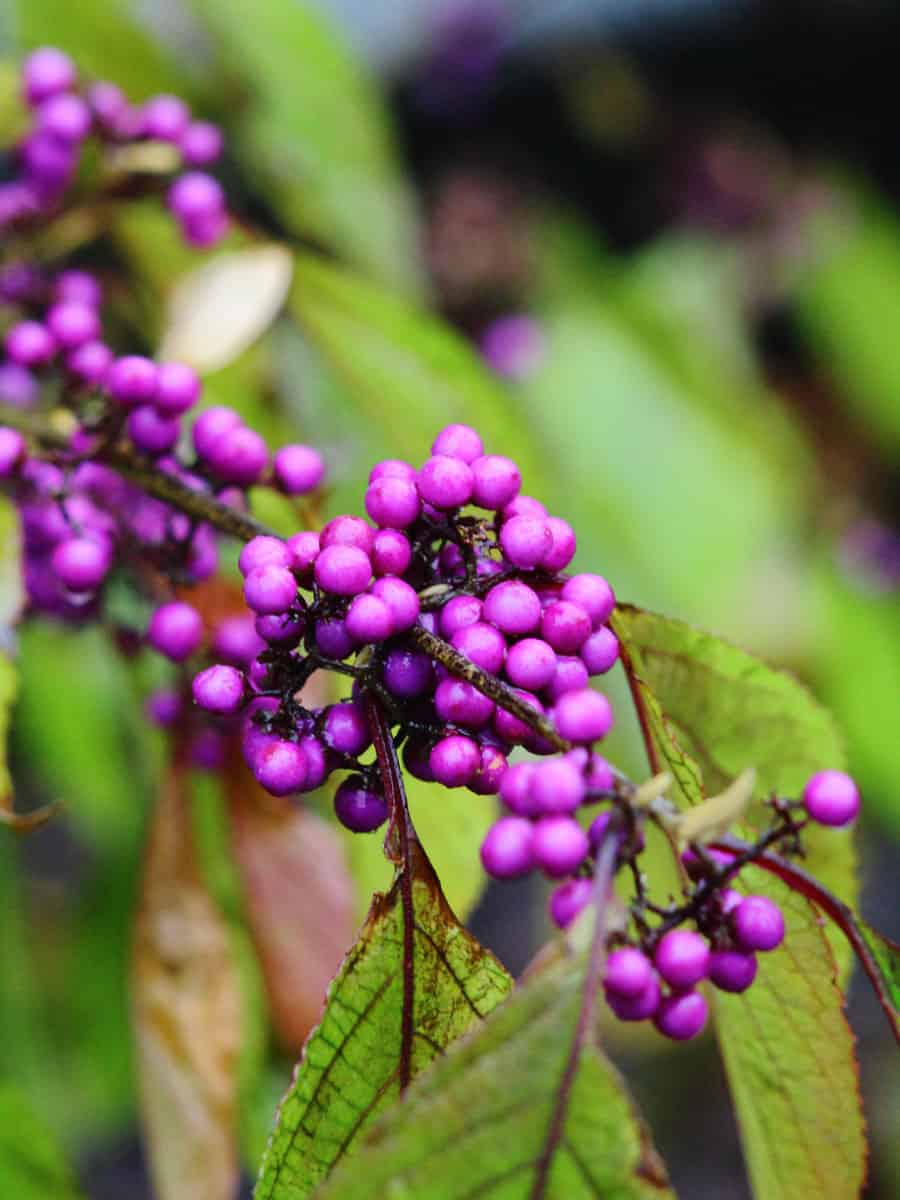
The American Beautyberry is lauded for its stunning clusters of purple berries which alongside its attractive foliage make it a standout in any garden setting.
These vibrant berries are particularly eye-catching during the fall season, adding a splash of color to the landscape.
This perennial shrub has an open, loose habit, growing 4 to 8 feet wide and tall.
The oval leaves, sometimes adorned with hairs, are held across from one another, possessing a saw-tooth margin.
Beautyberry's aesthetic appeal is further enhanced by its easy maintenance and adaptability, making it a worthy consideration for both seasoned gardeners and those new to landscaping.
When it comes to wildlife gardening, Beautyberry is a great plant choice.
Its berries provide an important food source for different species of birds and small mammals.
In Texas, for instance, Mockingbirds are particularly fond of the purple berries.
Get your 2-3 feet Beautyberry live plant on Amazon.
2. Winterberry
Winterberry is a deciduous holly species known for its vibrant red berries that persist through the winter months.

When the leaves drop, the brilliant berries remain, creating a stunning display that is especially striking against a backdrop of snow and bare trees.
Its brightly colored fruit from fall through winter not only enhances landscape beauty but also provides a welcome splash of color to the winter landscape, bringing life to otherwise dormant garden settings.
Winterberry serves as a dual-purpose wildlife plant. The red berries offer a late-season treat to many species of wildlife during winter and also serve as a great hiding spot for bird nests in the spring.
The berries are an important food source during the winter when food is scarce, and are loved by birds and other small mammals.
The fruits are a preferred food for many wildlife species such as raccoon, red squirrel, and a variety of birds including ruffed grouse, bobwhite, wood duck, robin, waxwing, thrushes, catbird, flicker, and brown thrasher.
Moreover, Winterberry is frequently used as nest sites by many songbirds.
Get 40 pcs of Winterberry seeds on Amazon.
Nut-Bearing Trees
Nut-bearing trees offer another reliable source of sustenance for wildlife during winter.
Nuts, or hard mast, provide a substantial source of energy and nutrition to various mammals and birds. Some common nut-bearing trees include:
3. Oak trees
Oak trees are renowned for their majestic stature and are symbolic of strength, making them a substantial and visually appealing addition to landscapes.
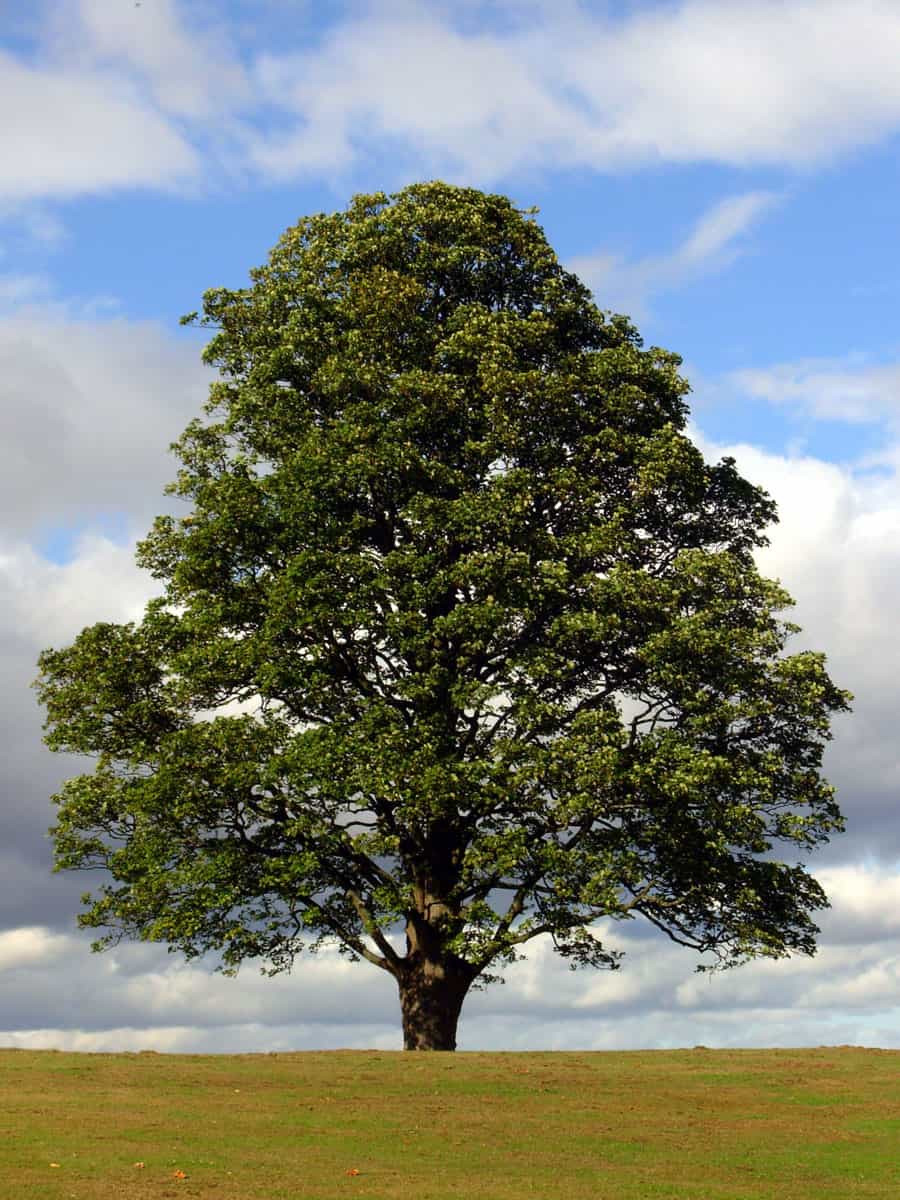
Some species of oak trees are known for their brilliant autumn foliage which turns shades of red and orange, adding a vibrant touch to the landscape during the fall season.
Oak trees play a pivotal role in supporting wildlife. They provide shelter, food, and nesting sites for various animals.
The branches, nooks, and crannies in oak trees provide a safe haven for animals to rest, escape predators, and rear their young.
Even after they die, decomposing logs serve as a home for smaller creatures like salamanders, worms, and various insects, enriching the soil in the process.
Acorns, the seeds of oak trees, are a crucial food source for wildlife, including squirrels and deer.
4. Hickory trees
Hickory trees are appreciated for their stately appearance, strong and durable wood, and their bright yellow foliage in the autumn.

They can grow tall and provide excellent shade during summer, making them a fantastic choice for landscapes that can accommodate their size.
The nuts of hickory trees are a rich source of calories for wildlife. They provide food and shelter especially for bats, insects, and small mammals.
Their nuts are essential for squirrels and other wildlife during the winter months, providing the necessary nutrients to survive the cold season.
5. Walnut trees
Walnut trees are known for their large, fern-like foliage which provides a light, airy shade, making them excellent shade trees for larger properties.
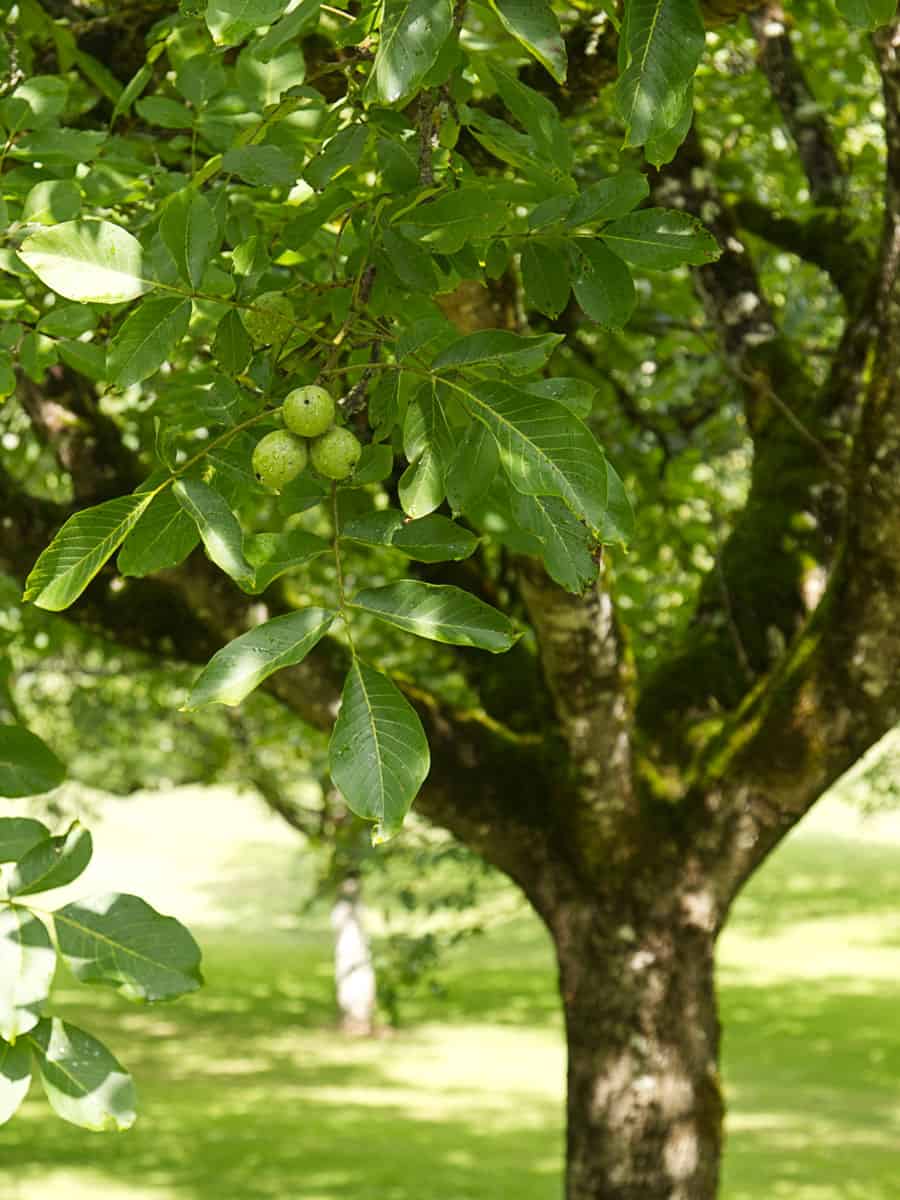
They grow tall and wide when given space, and can add a significant amount of greenery and shade to landscapes.
The fall season brings a change in leaf color, adding to the aesthetic value of these trees.
The large, high-calorie nuts of walnut trees are a major attraction for a variety of wildlife including squirrels, deer, and birds.
These nuts provide essential nutrients like protein, carbohydrates, and fats, which are vital for storing energy for hibernating animals during winter.
Besides, walnut trees contribute to soil health and provide habitats for a multitude of species, enhancing overall biodiversity in the area they are planted.
Seed Producing Flowers
Finally, seed-producing flowers present a helpful food source for wildlife during winter.
As the flowers die back, they leave behind seeds that supply nutrition to birds and other wildlife creatures.
Some seed-producing flowers to consider planting are:
6. Coneflowers
Coneflowers are cherished for their vibrant color and distinctive flower heads, making them a favorite among gardeners.
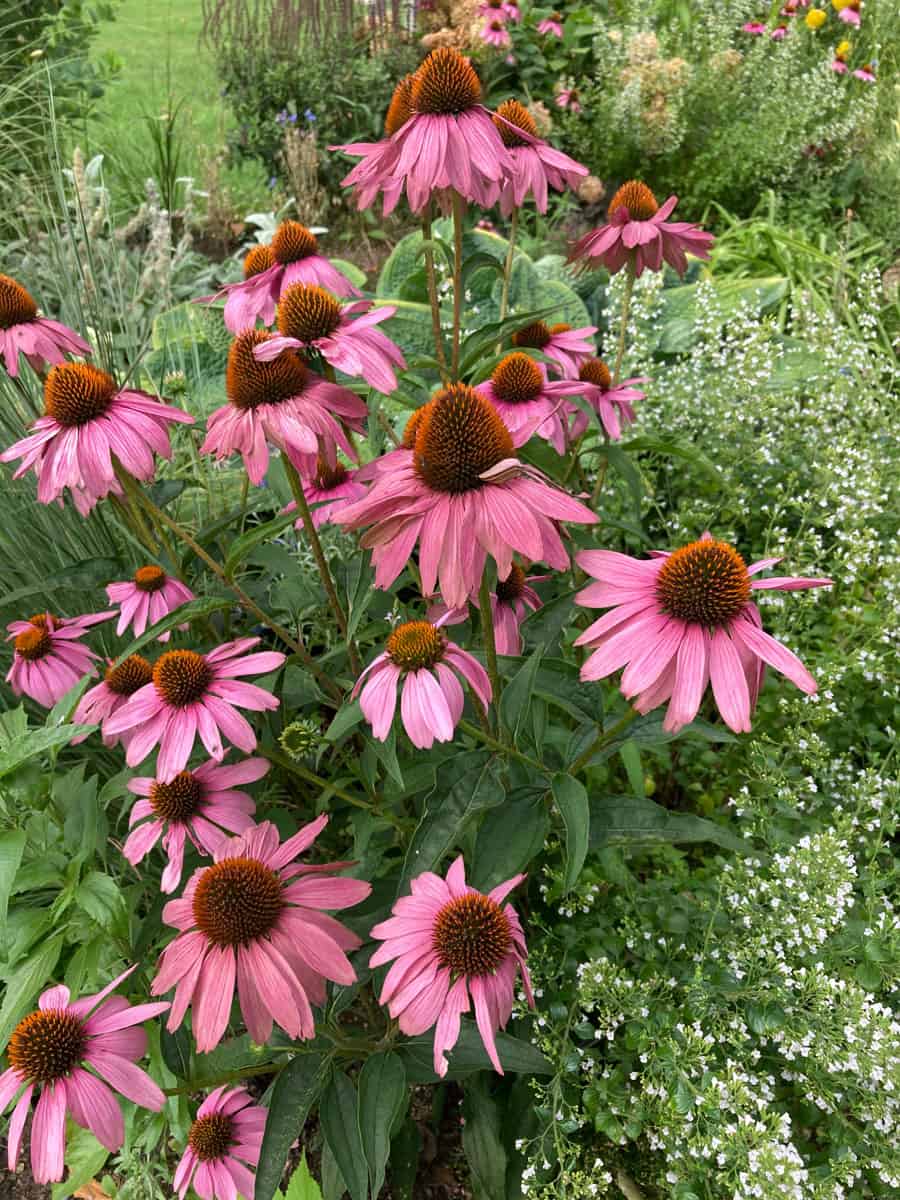
They add a splash of color to any garden and have a long flowering season, typically from summer through fall, which keeps the garden lively and visually appealing for a prolonged period.
Echinacea plants, another name for Coneflowers, typically grow up to 2-4 feet tall and spread about 1-3 feet wide, depending on the variety.
Their nectar-rich flowers are irresistible to pollinators, adding a lively atmosphere to the garden.
They provide food for native pollinators such as bees, butterflies, and hummingbirds.
During winter, the dried seed heads left by the coneflowers provide a food source for birds like American goldfinches and others.
View this purple Coneflower non-GMO seeds on Amazon.
7. Sunflowers
Sunflowers are renowned for their large, radiant flowers which can range in color from the typical yellow to red, adding a bold statement to any garden.

They are a low cost, high impact addition to the garden, providing a cheerful atmosphere.
Besides being a spectacle, sunflowers provide a habitat for various wildlife and are particularly beneficial for pollinators like bees and butterflies.
Their large seed heads provide a substantial amount of food for birds, especially during colder months, making them an essential part of a wildlife-friendly garden.
8. Asters
Asters enliven the end-of-season landscape with their range of colors from blue, purple, pink to white.
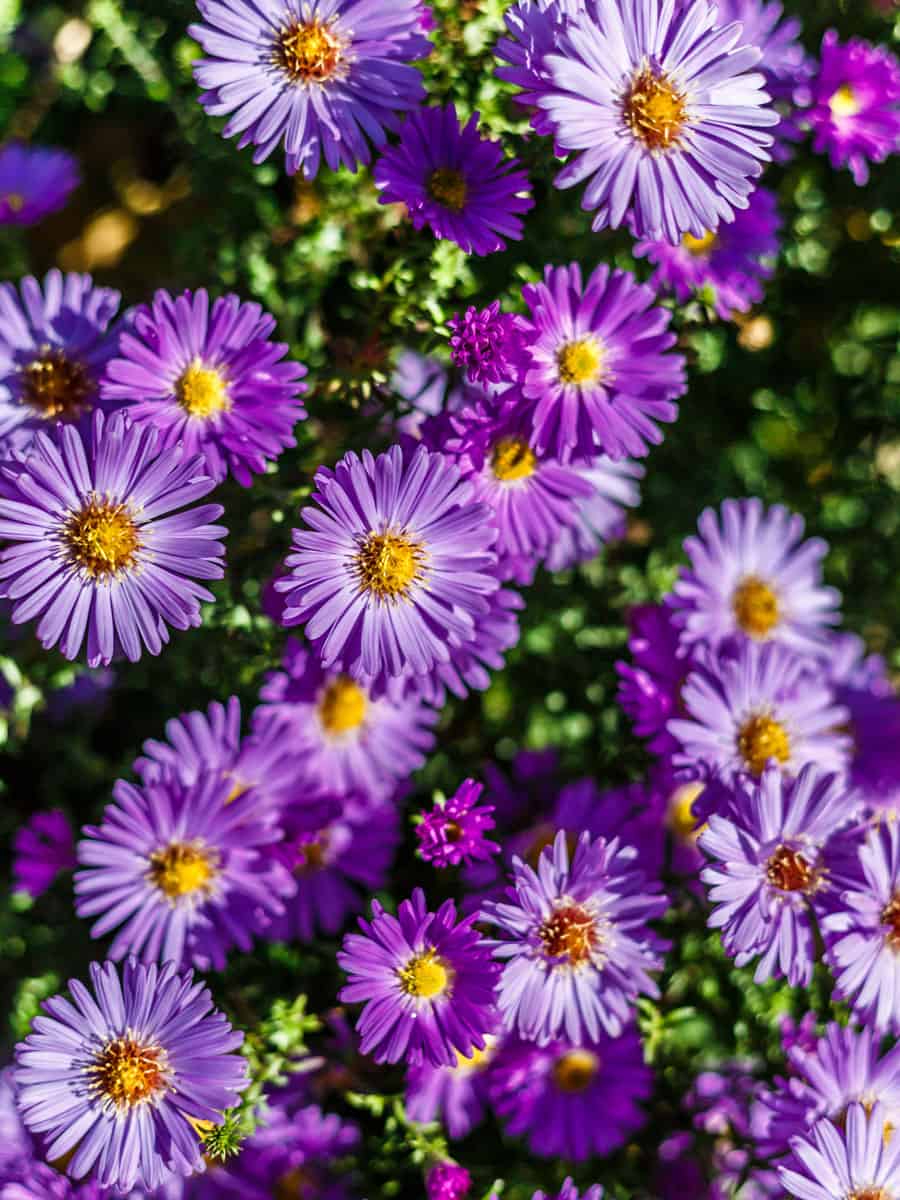
They are recognized as some of the most colorful and versatile flowers, making them a beautiful addition to gardens, meadows, and woodland edges.
These flowers provide essential late-season nectar for many pollinators including butterflies, bees, and moths.
Asters are especially important for monarch butterflies migrating from the north.
They also serve as host plants for a myriad of butterfly and moth species, offering a crucial food source as other blooms begin to fade with the approach of winter.
Check out this Aster rainbow mix flower seeds on Amazon.
Impacts on Local Ecosystem
As you grow plants that provide food and shelter to wildlife during winter, you'll notice several benefits to your local ecosystem.
By offering sustenance and refuge to animals, you're helping to maintain biodiversity and strengthen wildlife populations.
By doing so, you also aid in sustaining pollinator populations, as pollinators such as bees, butterflies, and hummingbirds rely on local plants for nectar and pollen.
Climate change poses a threat to these species, often disrupting their natural pollination cycles and interactions with plants.
As plants give refuge to various wildlife species, they create small ecosystems of their own.
When you establish a diverse selection of plants in your garden or landscape, you foster a strong foundation for the food web to naturally evolve.
By doing this, you not only establish balance in the local ecosystem but also contribute to a resilient and healthy natural environment in your community.
For more inspiration on caring for pollinator populations, check out these other inspiring articles:
Wildflower Takeover: How A Couple Transforms Their Yard Into A Bee Paradise Yearly






